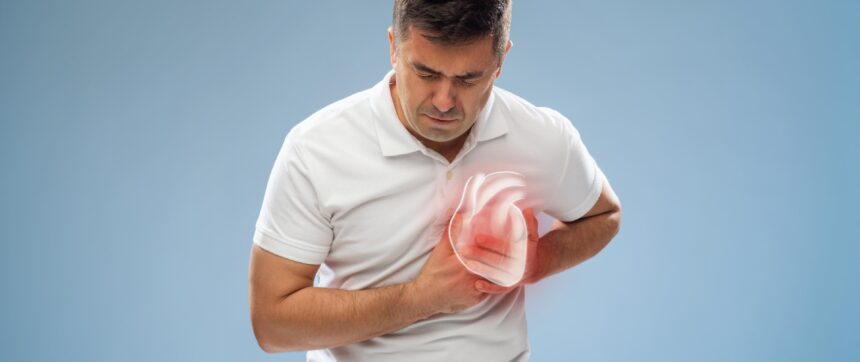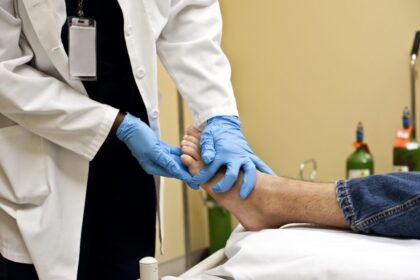When it comes to heart emergencies, the terms cardiac arrest and heart attack are often used interchangeably — but they are not the same. Knowing the difference can save lives. Both are serious heart conditions, yet they differ in causes, symptoms, and immediate treatments.
This article will help you understand the crucial distinctions between cardiac arrest and heart attack, their symptoms, risk factors, and life-saving steps you can take.
What is a Heart Attack?
Definition and Causes
A heart attack, also called myocardial infarction, occurs when blood flow to a part of the heart is blocked. This blockage is usually caused by a buildup of fat, cholesterol, and other substances (plaque) in the coronary arteries. The interrupted blood flow damages or destroys part of the heart muscle.
Common Causes of Heart Attack
- Coronary artery disease (CAD)
- Blood clots
- Severe spasms in a coronary artery
- High cholesterol and hypertension
- Smoking and obesity
What is Cardiac Arrest?
Definition and Causes
Cardiac arrest happens when the heart suddenly stops beating. It’s an electrical malfunction that causes the heart to stop pumping blood to the brain and other vital organs. Without immediate treatment, cardiac arrest is often fatal within minutes.
Common Causes of Cardiac Arrest
- Ventricular fibrillation (abnormal heart rhythm)
- Heart attack (can lead to cardiac arrest)
- Cardiomyopathy (enlarged heart)
- Drug overdose
- Electrocution or trauma
- Congenital heart disease
Key Differences Between Cardiac Arrest and Heart Attack
Here’s a simple comparison table to clarify the two conditions:
| Feature | Heart Attack | Cardiac Arrest |
|---|---|---|
| What it is | Blocked blood flow to the heart muscle | Sudden stop in heart function |
| Cause | Blocked artery | Electrical malfunction |
| Onset | Gradual (can be hours or days) | Sudden and without warning |
| Consciousness | Usually conscious | Person collapses, unconscious |
| Breathing | Often normal | No breathing or abnormal breathing |
| Emergency Response | Medical help, medications | CPR and defibrillation needed immediately |
Symptoms of a Heart Attack
Recognizing the Signs
- Chest pain or discomfort (tightness, pressure)
- Pain in arms, neck, jaw, back
- Shortness of breath
- Cold sweat
- Nausea or vomiting
- Lightheadedness
Note: Symptoms can be different in women — they may feel fatigue, indigestion, or dizziness without chest pain.
Symptoms of Cardiac Arrest
Signs of Immediate Collapse
- Sudden loss of consciousness
- No pulse
- No breathing
- Unresponsiveness
It can happen without any warning. Sometimes a person may feel palpitations or dizziness before collapsing.
What to Do in Case of a Heart Attack
Emergency Response
If someone is having a heart attack:
- Call emergency services (e.g., 911) immediately.
- Have the person sit and stay calm.
- If available, give aspirin (unless allergic or contraindicated).
- Use nitroglycerin if prescribed.
- Monitor breathing and pulse until help arrives.
What to Do in Case of Cardiac Arrest
Immediate Life-Saving Action
If someone collapses suddenly:
- Call emergency services immediately.
- Start CPR (push hard and fast in the center of the chest at 100–120 beats/min).
- Use an AED (Automated External Defibrillator) if available.
- Continue CPR until medical help arrives or the person responds.
How Heart Attack Can Lead to Cardiac Arrest
A heart attack can trigger electrical disturbances in the heart, leading to ventricular fibrillation — a condition that causes cardiac arrest. Not every heart attack leads to cardiac arrest, but it’s one of the most common causes.
Diagnosis and Treatment
Diagnosing a Heart Attack
- ECG (Electrocardiogram)
- Blood tests for cardiac enzymes
- Echocardiogram
- Angiography
Treatment for Heart Attack
- Medications: Aspirin, thrombolytics, beta-blockers
- Procedures: Angioplasty, stent placement, coronary artery bypass surgery
Diagnosing Cardiac Arrest
- Based on physical signs (no pulse, no breathing)
- After revival, tests like ECG, blood tests, and imaging are done
Treatment for Cardiac Arrest
- Immediate CPR
- Defibrillation
- Advanced cardiac life support (ACLS)
- Implantable cardioverter defibrillator (ICD) in high-risk patients
Prevention Tips for Both Conditions
Lifestyle Modifications
- Eat a heart-healthy diet (low in saturated fats and sodium)
- Exercise regularly
- Don’t smoke or use tobacco
- Manage stress
- Control blood pressure, diabetes, and cholesterol
- Limit alcohol consumption
Conclusion
Although cardiac arrest and heart attack both involve the heart, they are entirely different medical emergencies. A heart attack is caused by a blocked artery, while cardiac arrest is caused by an electrical malfunction. Quick recognition and response are critical for both. Educating yourself and others about the differences could be life-saving.
FAQs
1. Can a heart attack cause cardiac arrest?
Yes, a heart attack can lead to cardiac arrest by triggering dangerous heart rhythms like ventricular fibrillation.
2. Are the symptoms of cardiac arrest and heart attack the same?
No. Heart attack often has warning symptoms like chest pain, while cardiac arrest occurs suddenly with collapse and no pulse.
3. Is CPR needed for a heart attack?
Not usually. CPR is only necessary if the heart attack leads to cardiac arrest and the person stops breathing or has no pulse.
4. What’s the survival rate of cardiac arrest?
Survival depends on quick action. With immediate CPR and defibrillation, survival rates improve significantly.
5. Can young people have cardiac arrest?
Yes, especially due to underlying genetic conditions or sudden trauma.
6. Can you have a heart attack without chest pain?
Yes. Some people, especially women, diabetics, and older adults, may experience atypical symptoms like fatigue or nausea.
7. What is the best first aid for cardiac arrest?
Call emergency services, begin CPR, and use an AED if available.
8. How can I reduce my risk of heart problems?
Maintain a healthy lifestyle, avoid smoking, manage stress, and get regular medical check-ups.









